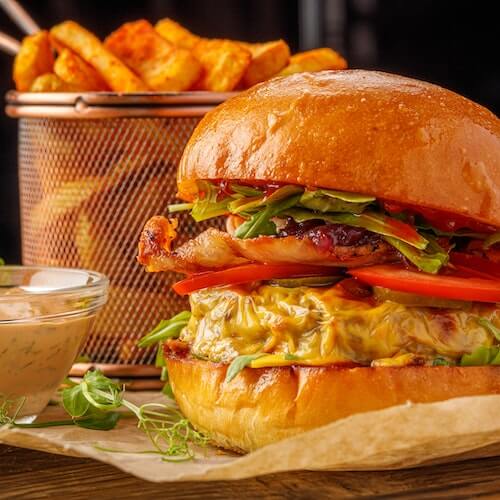Vegetable Calories
Learn about the calories and nutrition data behind the vegetables.

A massive part of vegetables won’t incorporate very many calories, and but it’s going to consist of a remarkable dose of vitamins, minerals, and different nutrients. Vegetables incorporate a mixture of carbohydrates at the side of smaller quantities of healthful fat and protein.
| Food | Serving | Calories |
|---|---|---|
| Potato | 1 large | 164 cal |
| Broccoli | 1 bunch (608 g) | 207 cal |
| Celery | 1 stalk (40 g) | 6 cal |
| Peas | 1 cup (98 g) | 79 cal |
| Pumpkin | 1 small (196 g) | 51 cal |
| Tomato | 1 medium | 20 cal |
| Onion | 1 small | 34 cal |
Discover the foods that fuel you.
- Wine Calories
- Vegetable Calories
- Pizza Calories
- Fruits Calories
- Eggs Calories
- Chia Seeds Calories
- Hash Browns Calories
- Tequila Calories
- Streak Calories
- Miller Lite Calories
- Costco Croissant Calories
- Costco Chicken Bake Calories
- Chipotle Tortilla Calories
- Salmon Calories
- Miso Soup Calories
- Popeyes Biscuit Calories
What vegetables are high in calories?
Mentioned below is a list of high-calorie vegetables. People who want to gain weight can add high-calorie vegetables to their diet to increase calorie intake. Mentioned below is a list of high-calorie vegetables.
- Peas: Peas contain 67 calories per 100 g.
- Parsnip: Parsnip contains 58 calories per 100 g.
- Kale: Kale contains 54 calories per 100 g.
- Beet: Beet contains 47 calories per 100 g.
What vegetable are low in calories?
Try adding more fiber-rich vegetables into cooking to make filling and nutritious food. List of Low Calorie Vegetables:
- Watercress. Watercress contains 11 calories per 100 g.
- Napa Cabbage. Napa Cabbage contains 12 calories per 100 g.
- Cucumber. Cucumber contains 12 calories per 100 g.
- Lettuce. Lettuce contains 15 calories per 100 g.
- Alfalfa Sprouts. Alfalfa Sprouts contain 23 calories per 100 g.
- Arugula. Arugula contains 25 calories per 100 g.
How many calories does a bowl of vegetables have?
| Generally speaking, there are 147 calories in 1 cup of Cooked Vegetables. But it depends on the vegetable and the size of the bowl. |
How many calories should I eat a day?
The recommended daily calorie intake ranges from 1,600 to 3,200. Generally, it is 2,000 calories a day for women and 2,500 for men. Use the calorie calculator to estimate the number of daily calories your body needs.




